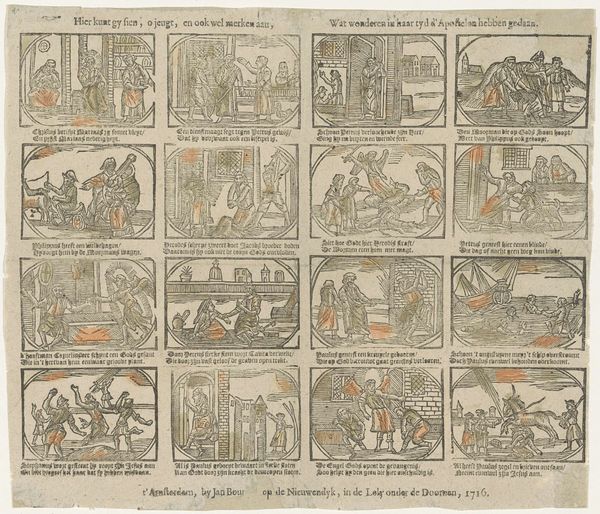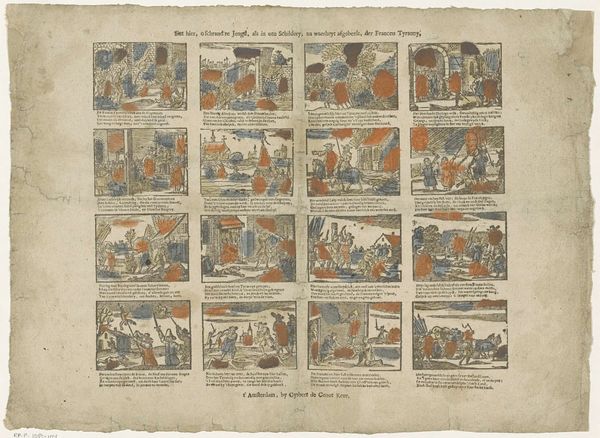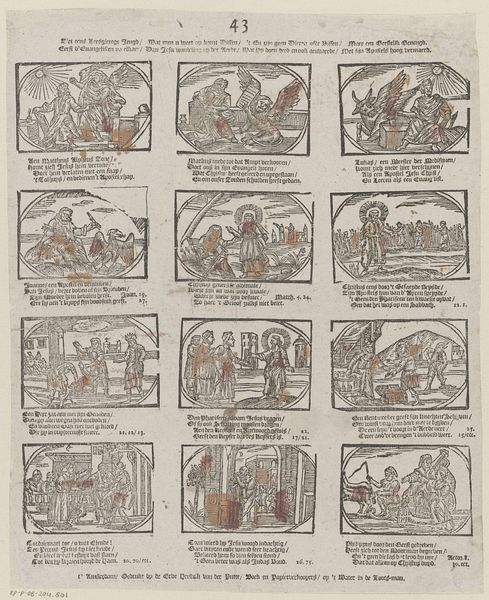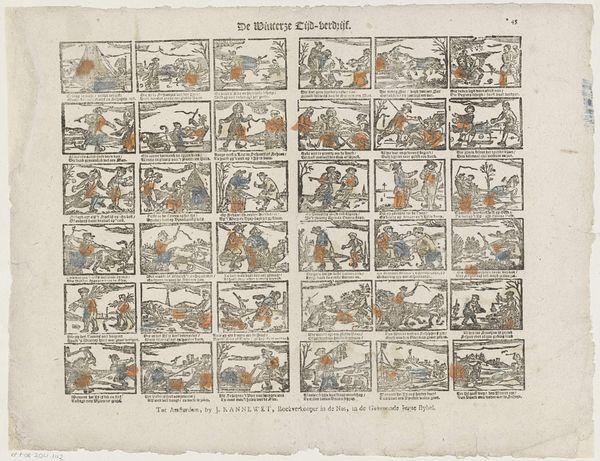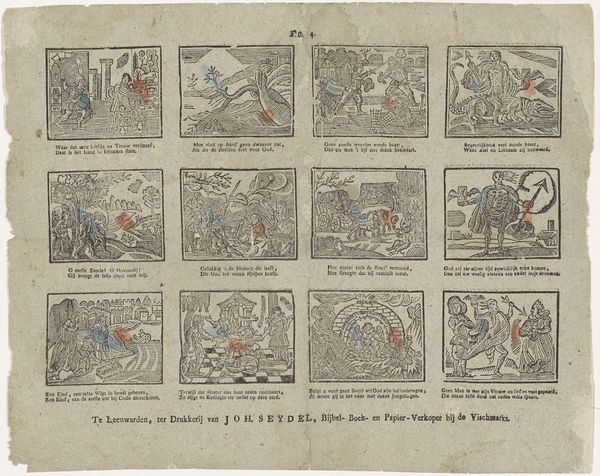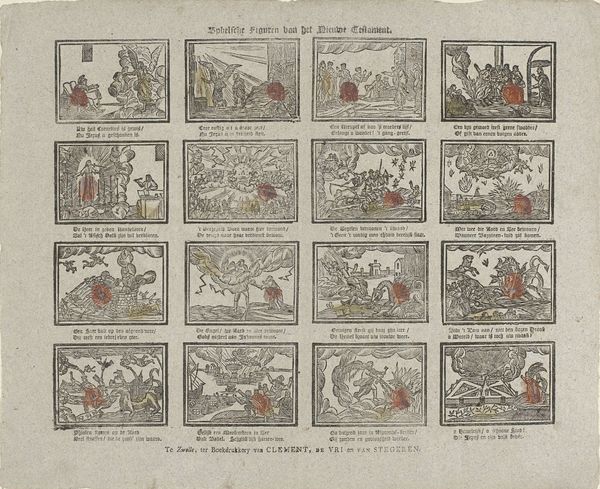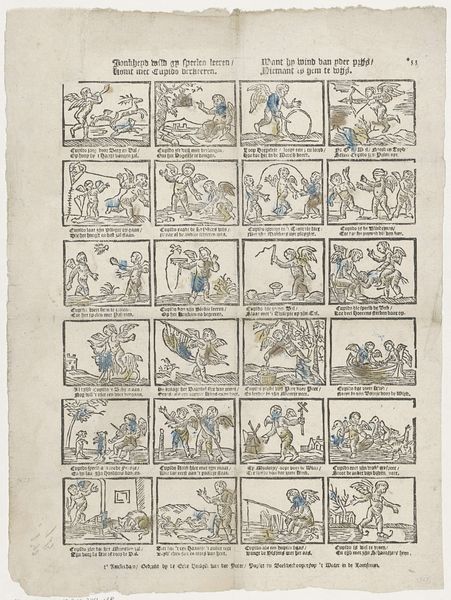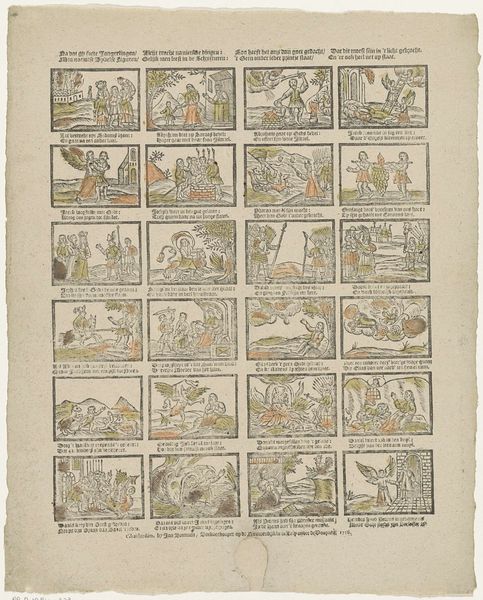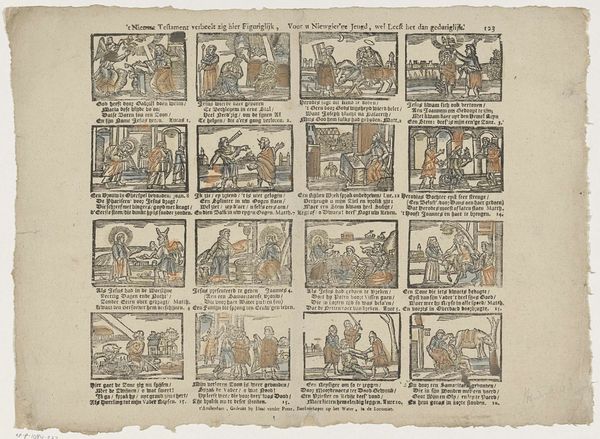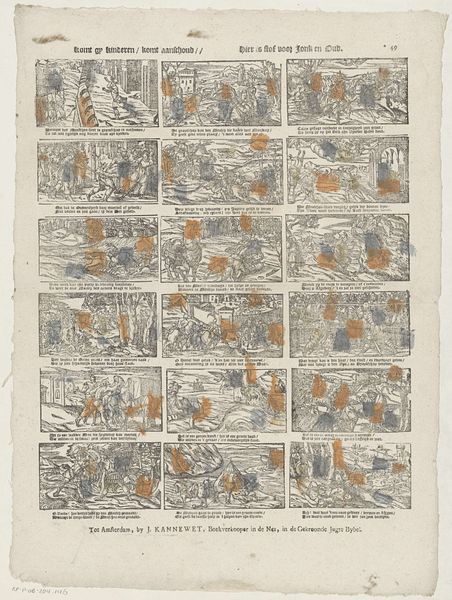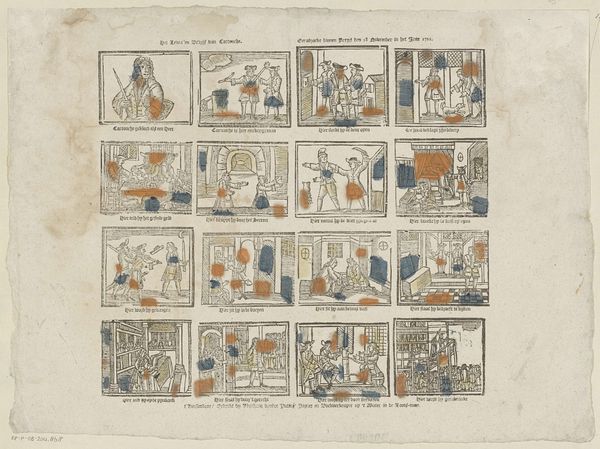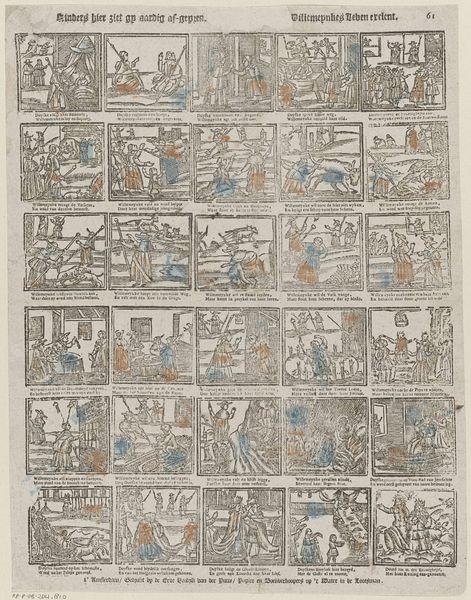
Af-beelding van het vertrek van haare koninklijke hoogheden / en aankomst der zelver in Engeland: Alsmede haare krooningen tot konink en koningin van Engeland 1725 - 1780
0:00
0:00
johannesiikannewet
Rijksmuseum
print, engraving
#
comic strip sketch
#
aged paper
#
narrative-art
#
baroque
# print
#
old engraving style
#
sketch book
#
personal sketchbook
#
sketchwork
#
pen work
#
sketchbook drawing
#
history-painting
#
storyboard and sketchbook work
#
sketchbook art
#
engraving
Dimensions: height 320 mm, width 435 mm
Copyright: Rijks Museum: Open Domain
Curator: At first glance, this engraving, likely created between 1725 and 1780, feels almost like a page ripped from a political comic book. It has that raw, narrative energy, but also a density of detail in each panel. Editor: Exactly! That grid layout really emphasizes the production element. It makes me think about how these images were distributed, consumed, and reproduced en masse for the public. Look at the way the artisan, Johannes (II) Kannewet, organized and broke down each part of the sequence. Curator: Well, let’s consider the title: "Af-beelding van het vertrek van haare koninklijke hoogheden / en aankomst der zelver in Engeland: Alsmede haare krooningen tot konink en koningin van Engeland," which details the departure and arrival of royalty to England and their subsequent coronation. Each box is like a snapshot, telling a specific part of the overall narrative. Editor: Right, and those small details like the rendering of their clothing, and the crowds surrounding the events are more than design choices—they speak directly to how monarchy projects its power. Even something like their naval procession across the channel: such detail shows its capacity to enact power over the English waters, and also Kannewet’s access to materials. Who commissioned it? Why and how was this mode of making art used in relation to this royal coronation? Curator: Given the time period, I’d guess it was likely commissioned to promote the image of the monarchy—royalty and their supporters would've benefitted most, which means the visual messaging serves a strong political agenda. The narrative being depicted must also conform to what authorities were trying to convey. Editor: The fact that it’s an engraving is key. Engravings allowed for mass production, and that means broader reach and impact on public perception and collective memory. So this print not just captured an event, but also actively shaped how people understood it, influencing opinion. Curator: Looking closer, it's compelling how this particular artwork showcases both meticulousness and accessibility. You can see a level of careful detail, while simultaneously creating an art that ordinary people could interpret and grasp, reinforcing an aspirational lifestyle associated with royalty and governance. Editor: It's interesting to ponder on the interplay between the artist, the depicted event, the method of engraving and replication, and how its different elements interact to impact our comprehension of power. Curator: Indeed. The engraving here becomes both a window into history and a reflection of its complex processes and circumstances of image-making. Editor: A lasting emblem, crafted via tangible labour and its ripple impact through an audience via an image that attempts to capture an epic royal journey.
Comments
No comments
Be the first to comment and join the conversation on the ultimate creative platform.
